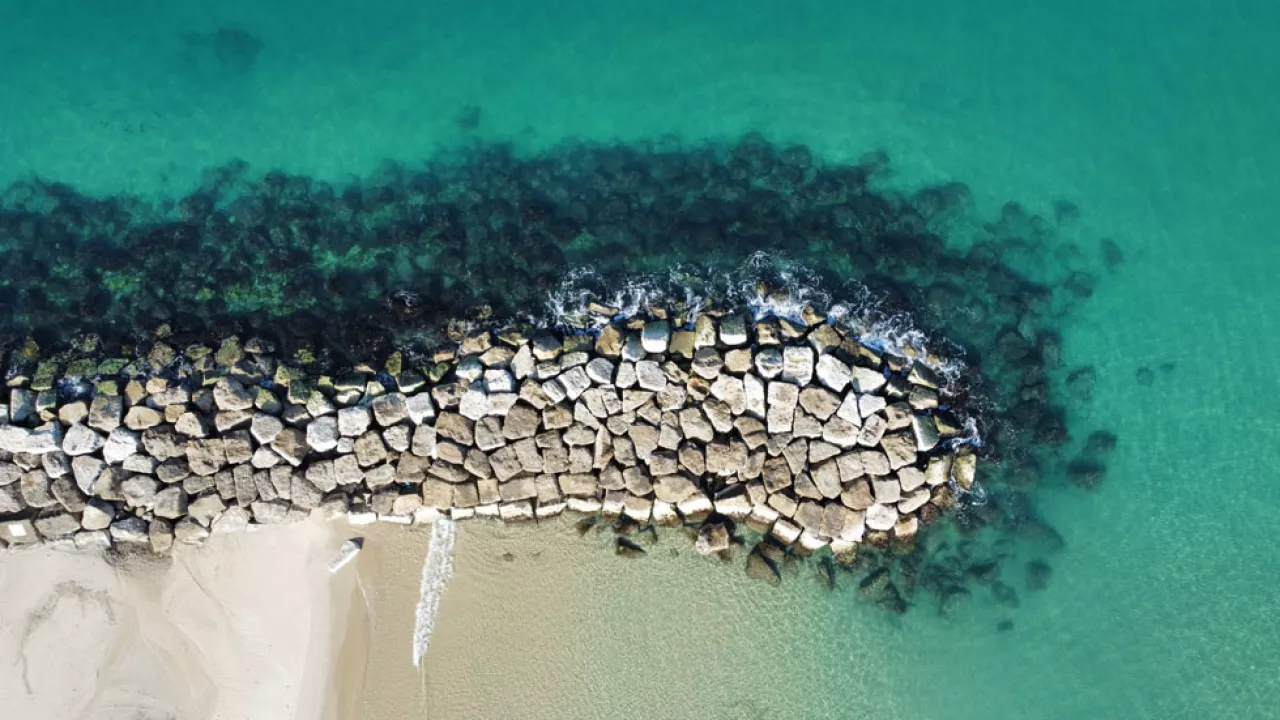Sustainably protecting our coastlines from climate change (REF 2021)
Sustainably protecting our coastlines from climate change
In summary
Concrete is the most common material for making coastal defences and more specifically, breakwaters. Cement, the main binder in a concrete mix, is primarily made of clinker – a residue produced by firing limestone and clay in a furnace heated to 1450°C.
Cement making is responsible for about seven per cent of annual CO₂ emissions, which heats the atmosphere, therefore melting icecaps and increasing ocean surface levels which causes flooding.
Researchers from the University of East London (UEL) have designed a new low-carbon concrete mix which can reduce CO₂ emissions by 40 per cent compared to traditional concrete.
Alongside this, Dr Ravindra Jayaratne, reader in coastal engineering has worked with disaster-vulnerable communities to help build stronger, sustainable coastal defences while strengthening people's mental resilience against facing tsunamis.
Sustainably protecting our coastlines from climate change
REF 2021 impact case study, Dr Ravindra Jayaratne, School of Architecture, Computing and Engineering
What did we explore and how?
Dr Jayaratne has conducted post-disaster field research across the world, improving coastal defences and supporting people in becoming more resilient to tsunamis and less anxious about the risks they carry.
Analysing structures in Indonesia, Sri Lanka, Thailand, Tanzania and Japan, he found that defences designed by the Hudson formula had provided insufficient protection due to past damage.
After designing a modified Hudson formula for differed tsunamis, Dr Jayaratne collaborated with Dr Ali Abbas to use his low-carbon concrete design, which builds cement with recycled materials including granulated slag from steelworks and pulverised ash from coal power plants – residue which can be scraped from the bottom of furnaces.
The designs show that it is possible to use up to 60 per cent steel furnace waste in the mixes without the concrete losing its compressive strength.
Dr Jayaratne has also led on soft engineering solutions working with disaster-vulnerable communities to establish designated high-ground areas, escape routes, warning and predictive systems while making it part of their culture and including tsunami dangers in school curriculum and urban planning.
What is the impact of this research?
The new breakwater design from Dr Jayaratne and Dr Abbas uses steel – a more sustainable material – which helps reduce concrete's carbon footprint and build equally strong defences.
The low-carbon concrete mix produced a 40 per cent smaller carbon footprint compared to traditional concrete. The costs and emissions of construction are lower as a result, and the final product is just as strong as a traditional breakwater. Recent construction projects in Malaysia have begun incorporating the design.
"We have a responsibility to ensure that our defences against climate change are not indirectly causing it," said Ravi,
"Our low-carbon structures are just as strong and show that the world can adapt to the effects of climate change without making it worse," he concluded.
Tsunami safety focus groups led by Dr Jayaratne, have shaped urban planning and evacuation strategies in Lampung, Sumatra. His analysis of wave and sediment data in Marawila, Sri Lanka has also led to successful interventions in protecting coastlines.
His work has also advised United Nations Office for Disaster Risk Reduction (UNDRR) policy.
REF case study: Protecting the beaches; Disaster prevention mechanisms against tsunamis, floods and coastal erosion
School: The School of Architecture, Computing and Engineering
Area: Engineering
Academic: Dr Ravindra Jayaratne
